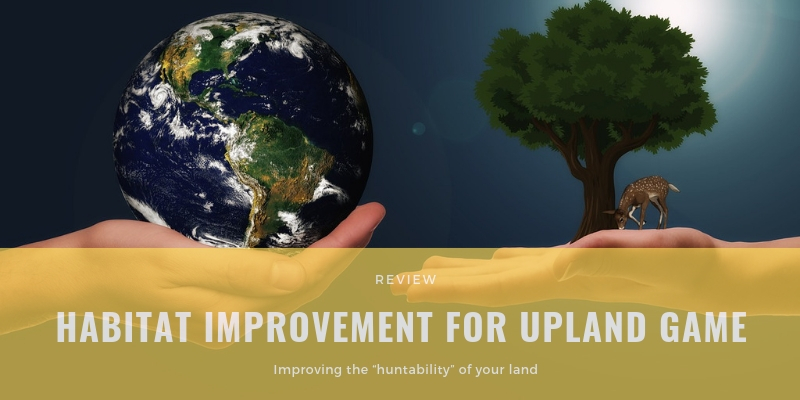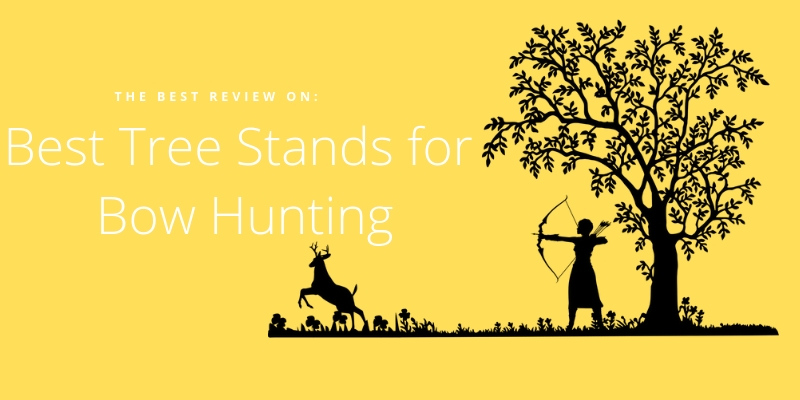Herbicides are an extremely important tool for wildlife management. In terms of improving habitat for upland game, they are usually more effective, less costly, and produce longer lasting results than many cultural practices currently used.
This article will focus on improving wildlife habitat and enhancing hunting opportunities at the same time using two basic chemistries – imazapyr and glyphosate.
Effective use of Imazapyr (ARSENAL, CHOPPER) to Improve Habitat for Upland Game
Imazapyr (ARSENAL, CHOPPER) is an example of a highly selective herbicide. Selectivity means that certain plants are tolerant and will not be harmed (they will, in fact, be released) by over-the-top broadcast applications (see Tolerant Plant List).

These plants can be lumped into three main groups – legumes (partridge pea, lespedeza, beggarweeds, etc.), rubus (blackberry, dewberry, etc.), and pines, which are all tolerant of imazapyr.
Improve Habitat for Upland Game Using Glyphosate (ROUNDUP PROÒ, ACCORDÒ)
Glyphosate (ROUNDUP PROÒ, ACCORDÒ) is an example of a non-selective herbicide, i.e., it will control a very broad spectrum of plants. The plant species that will be released and will recolonize (i.e., those plants that are tolerant) and those that will be controlled is largely a function of the chemistry that is chosen.

Here we will focus on three ways to use herbicides to enhance wildlife habitat and improve the “huntability” of your land. These include enhancing native herbaceous plant communities by controlling low-quality hardwood brush, installing interspersion index enhancement features (spoke & hub), and establishing shooting lanes, stalking trails, and wildlife corridors.
Low-Quality Hardwood Brush Conversion to High-Quality Herbaceous Plants
Many forest understories in the South are choked with low-quality hardwoods like sweetgum (see Photo). They form a dense canopy and shade the ground, virtually eliminating herbaceous plants.
Bushhogging and prescribed burning do not control the root systems of low-quality hardwoods and, in fact, may make the problem worse.

Hardwoods produce an average of almost 10 new sprouts per rootstock after mowing, for example. The best method to control low-quality hardwood brush is to spray with a herbicide.
Use imazapyr in pine dominated forests and use glyphosate in a mixed or hardwood dominated forest when applying broadcast. Apply in the fall in 25-50 GPA with ground rigs (rubber tired skidder, agriculture tractor, 6X6), or in 10 GPA in pine forests with a helicopter (imazapyr only).
Conduct a cool, dormant-season prescribed burn at least six weeks after spraying. This will stimulate the native plant seed pool in the soil which will germinate the following Spring and recolonize the understory (see Photo).
Subsequent prescribed burning regimes are a function of the wildlife species preferred but usually will rotate from 1- to 10-year intervals. Shorter intervals of 1-3 years are best for quail while 3 to 5 years favor turkey. Intervals of 5-10 years favor whitetail deer.
 |
Interspersion Index Enhancement Feature – Installing a Spoke & Hub
When properly installed, a spoke and hub can improve the habitat for upland game. These should resemble a large turkey foot from the air (see Photo), with a minimum of three and not more than five lanes. They represent one of the best hunting experiences imaginable and are extremely well suited for young pine forests.
During site preparation, be sure to use imazapyr (no tank mix) to ensure that preferred wildlife food sources will be released.
Installation can be conducted with a disc during stand establishment (pine planting) or with a sawhead feller buncher, a bulldozer, or by using the injection method of herbicide delivery in older-aged forests.
Stump removal, if desired, can be accomplished with an excavator or they can simply be allowed to decompose. The best method to use during installation depends on a number of factors.
Consult an experienced wildlife biologist who is familiar with their installation to avoid costly mistakes. I like to establish the initial width at around one chain (66’) keeping individual spoke length at 100- 400 yards, largely depending on the topography, proximity to adjacent habitats, and the shooting skills of the landowner or guests.
Manage the edges for ecotones, or transition zones, comprised of native plants (broomsedge, blackberry, sumac, forbs, etc.). Keep the ecotones variable in width, usually from 10-30’ wide on both sides.
Side-trim to remove undesirable hardwoods with the appropriate herbicide spraying a swath 12-18’ wide. Model 140 BoomBuster nozzles work best. Eventually, disc (one pass) a wavy lane on the right side and bushhog (one pass) a wavy lane on the left side of each lane (see Photo).
Plant the interior with agricultural plants and maintain both warmseason and cool-season varieties or mixtures. Lime and fertilize before planting to obtain optimal growth.
Tie the ends of each lane into another habitat type or food plot by installing travel corridors. The interspersion index (a numerical value relating to habitat types) goes from one to over 40 with proper installation. Quail, breeding songbirds, neotropical migrants, turkey, rabbits, and whitetail deer will use these features.
Install an elevated hunting stand in the back center of the hub about even with the tree line. It may be necessary to prune overhanging branches along the edges to increase the available light and enhance viewing.
During thinning operations, these lanes can be used as skid trails while the hub can serve as the log deck.
Corridor Establishment – Shooting Lanes and Stalking Trails
One of the best ways to practice Quality Deer Management (QDM) as defined and promoted by the Quality Deer Management Association (QDMA), is to enhance the ability of hunters to observe deer for a longer period of time prior to harvesting.
Better harvest decisions can then be made with respect to protecting yearling bucks, harvesting does, and harvesting management bucks with poor antler morphology.
One way to improve habitat for upland game his is by installing shooting lanes. Forests (pine, mixed, or hardwood) where natural travel lanes already exist are usually chosen.
First, map out all deer trails in the area. Second, choose a site for a ladder stand, lock-on, or climber.
Next, using a compass or GPS, lay in a flag line that intercepts two or more deer trails.
Then, selectively remove appropriate trees until adequate sunlight and observation is reached. The deer trails should intersect at 90-degree angles or at least quarter into the lane.
I usually use a Shindaiwa B-45/P.J. Blade combination for small diameter stems (<2” Diameter at Brest Height or DBH) and an Husqvarna 340 chainsaw for larger stems (2-4” DBH).
Physically remove the trees from the site. For larger trees, use the injection method and leave standing.
Apply a cut-surface herbicide to the stumps to prevent sprouting. Each shooting lane should be 100-200 yards long. Keep the lanes around 50’ wide but vary the width down to around 30’ in places.
Consider slope and aspect when choosing the site and keep the prevailing wind direction in mind when selecting stand locations. Alternate stand locations can be chosen when using climbers, depending on wind direction.
I usually keep the number of lanes to one or two in these situations. Disc the interior with a square-wheel-type disc, fertilize, plant, and disc again (see Photo). Stalking whitetail deer is some of the best hunting there is, and proper management can help this too.
To improve your chances stalking, install a trail system that dissects different habitats. With these, the denser the vegetation the better.
Start with an aerial photo of your property and select areas that may primarily be used for feeding, bedding, and escape cover.
Do not penetrate deer sanctuaries that should be near the center of your land. Flag your trail carefully prior to installation. Try to identify existing deer trails and include as many 45- to 90- degree angles as possible with both right and lefthand corners.
Keep your straightaway to around 40 yards or so (see Photo). Mow the trial initially with a small tractor or ATV and a 4’ bushhog. Prune the lower limbs of the inside of each corner.
Spray a 36’ swath around 30 yards in length with imazapyr to release legumes and rubus where appropriate at a 90-degree angle on each side of each straightaway, staggering them.
Fertilize the entire trail system, including the sprayed lanes. Apply glyphosate in a 2’ band in the middle of the trail to expose bare dirt and remove all vegetation to maintain silence while hunting.
I like to conceal the entrance and exit from view. After the initial installation phase, refrain from driving an ATV or tractor on the stalking trail again.
Wear rubbersoled boots and use some of the new clothing that locks in human scent when hunting. Hopefully, the information contained in this article will help you to enhance wildlife habitat on your property and will make your hunting experiences more enjoyable. For additional information feel free to contact me at any time. Good hunting.
Note: If are you unfamiliar with the use of herbicides for wildlife habitat management, consult an expert. Herbicide rates and tank mixes are complex and site specific and should be prescribed by professionals. Always read and follow the label directions exactly.alloutprodux.com




